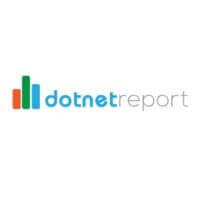Being able to swiftly generate reports and derive meaningful insights from data is essential in today’s IT industry. With the use of ad hoc reporting tools, users may quickly and easily generate reports that are customized to their unique requirements without needing to wait for IT departments or possess deep technical knowledge. This blog will explain ad-hoc reporting, discuss its importance, and go over the top five ad-hoc reporting options on the market right now.
Unlock powerful insights instantly—try Helical Insight, the best Ad Hoc Reporting tool today!
What is Ad Hoc Reporting?
Ad-hoc reporting refers to the process of creating reports on an as-needed basis. Unlike standardized reports, which are predefined and generated regularly, ad-hoc reports are generated to answer specific questions at a particular moment. These reports are highly customizable and provide the flexibility to dig deeper into data sets to find precise answers to immediate business queries.
Ad Hoc Reporting Tools
Software applications called “ad-hoc reporting tools” are made to make it easier to create these reports quickly. They give users easy-to-use interfaces, frequently with drag-and-drop capabilities, so they can choose, filter, and see data without requiring advanced technical knowledge. These technologies are essential for assisting firms in swiftly and effectively reaching data-driven decisions.
Why and When Is Ad Hoc Reporting Needed?
Ad-hoc reporting is essential for several reasons:
- Immediate Decision Making: It enables businesses to make informed decisions promptly by providing real-time access to data insights.
- Customization: Each business question is unique, and ad-hoc reporting allows for tailored data analysis to meet specific needs.
- Improved Efficiency: Reduces dependency on IT departments for generating custom reports, saving time and resources.
- Enhanced Analysis: Provides the ability to drill down into data, revealing detailed insights that standardized reports might miss.
Organizations often need ad-hoc reporting in scenarios such as:
- When launching a new product and needing immediate feedback.
- Analyzing the impact of marketing campaigns in real-time.
- Generating performance reports for specific departments or projects on the fly.
Unlock powerful insights instantly—try Helical Insight, the best Ad Hoc Reporting tool today!
Key Features for Ad Hoc Reporting
When selecting an ad-hoc reporting tool, consider the following key features:
- User-Friendly Interface: Should be intuitive and easy to use, allowing non-technical users to generate reports quickly.
- Data Integration: Capability to connect to various data sources, including databases, spreadsheets, and cloud services.
- Customization Options: Flexibility to customize reports extensively, including filters, calculations, and visualizations.
- Real-Time Data Access: Ability to access and analyze data in real-time for up-to-date insights.
- Security and Sharing: Robust security features to protect sensitive data and options to share reports easily with stakeholders.
Top 5 Ad Hoc Reporting Tools / Software
1. Helical Insight:

Helical Insight is an opensource business intelligence framework that offers extensive ad-hoc reporting capabilities. It provides a highly customizable platform with a strong focus on flexibility and scalability.
Key Features:
- Drag-and-drop report creation.
- Advanced data visualization options.
- Integration with multiple data sources.
- Customizable dashboards.
- Strong security features.
To download and try for free, plz register here. Reach out to support@helicalinsight.com for any more questions.

2. Tableau

Tableau is a leading data visualization tool known for its powerful analytics and ease of use. It enables users to create a wide range of interactive and shareable dashboards.
Key Features:
- Intuitive drag-and-drop interface.
- Connects to numerous data sources.
- Robust data visualization and analysis capabilities.
- Real-time data insights.
- Strong community support and resources.
Unlock powerful insights instantly—try Helical Insight, the best Ad Hoc Reporting tool today!
3. Whatagraph

Whatagraph is designed for marketing and digital agencies to simplify the process of creating visual reports. It allows users to pull data from multiple sources and create automated reports.
Key Features:
- Easy integration with marketing tools.
- Automated report generation.
- Customizable templates.
- Real-time data synchronization.
- User-friendly interface.
4. Databox

Databox is a business analytics platform that enables users to track performance metrics and KPIs in real-time. It is known for its ease of use and the ability to create dashboards quickly.
Key Features:
- Real-time data monitoring.
- Integration with various data sources.
- Customizable dashboards.
- Mobile access to reports.
- Easy sharing and collaboration.
Unlock powerful insights instantly—try Helical Insight, the best Ad Hoc Reporting tool today!
5. Dotnet Report

Dotnet Report is a user-friendly ad-hoc reporting tool that integrates seamlessly with .NET applications. It offers customizable reporting solutions tailored to business needs.
Key Features:
- Intuitive report designer.
- Integration with .NET applications.
- Real-time data access.
- Customizable report templates.
- Secure and scalable.
Conclusion
Ad-hoc reporting tools are essential for modern businesses to stay agile and responsive to changing data needs. The top five tools—Helical Insight, Tableau, Whatagraph, Databox, and Dotnet Report—each offer unique features catering to different business requirements. Whether you need advanced data visualization, real-time performance tracking, or seamless integration with existing applications, there is an ad-hoc reporting tool suited for your needs. Choose the one that aligns best with your organizational goals and start leveraging the power of data-driven decision-making today.
